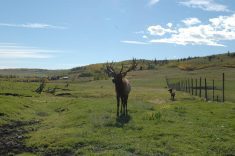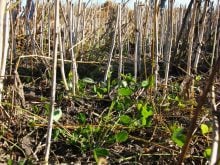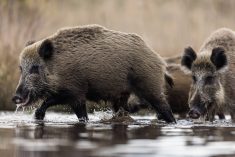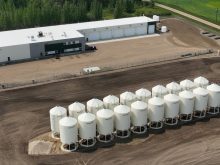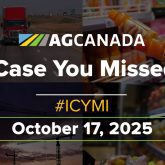Harry Pumfrey remembers looking out his kitchen window last summer and seeing cattle wandering over his carefully maintained lawn, up his driveway, around his shop and down the road.
“We chased them out of our yards as many as four or five times in a day. The most I ever chased was 30 or 40 back down the road towards his place,” said Pumfrey, who lives about five kilometres northeast of Outlook, Sask.
The roaming cattle came from the same herd that made news March 3 when the Saskatchewan SPCA seized 288 neglected cattle from Pumfrey’s neighbour, Wayne Robinson.
Read Also
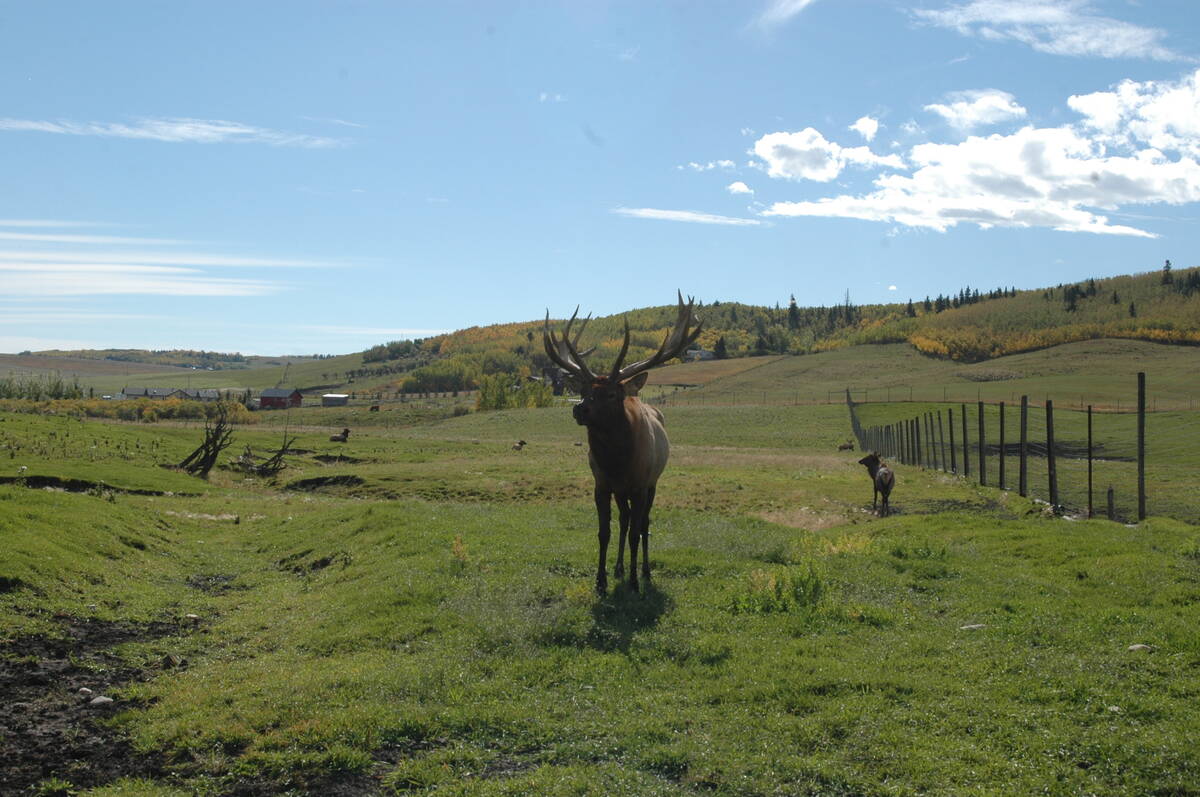
Feds propose overhaul of chronic wasting disease control program
Chronic Wasting disease control program getting updated by Canadian Food Inspection Agency with feedback encouraged from producers.
SPCA executive director Francis Wach said an animal protection officer had the animals assessed by a veterinarian, who determined they were in distress and recommended seizure.
Wach said 10 animals were euthanized during the seizure and 14 were euthanized at the feedlot where they were shipped.
Robinson did not reply to a request for an interview.
According to RCMP, the matter remains under investigation and charges are being considered.
Pumfrey said problems with his neighbour’s cattle started in July 2008. His home quarter borders the rented land where the cattle were held.
He estimated 300 cattle grazed the land, which is fenced. However, the land is not capable of supporting that many, he said.
Pumfrey said he spoke with Robinson about the cattle three times before taking his concerns to the authorities. Robinson apologized each time, said Pumfrey, but the situation did not change.
“You can’t blame the cows for getting out; not the cows fault. I mean if you’re hungry, you’re going to go get food wherever you want too.
“You don’t have to be a rocket scientist to know that cattle do not live on straw. There’s no nutritional value in straw or very little. It’s a filler,” he said.
Nothing was done with the cattle between September and February and Pumfrey said the cows starved.
Then people began to notice a rising coyote population.
“We’d see six, 10, 12 (coyotes) wandering around with the cows and the calves and the dead animals.
“At coffee row it was talked about for days, months. Everybody knew,” he said.
Kevin Ylioja, secretary treasurer of the Rudy Feeder Co-op in Outlook, said members of the feeder association were told there were dead animals and they alerted the SPCA.
“We just felt that’s the best way to handle it,” Ylioja said.
Pumfrey said he was involved when the SPCA, the brand inspector and the RCMP arrived.
He said every animal was removed except those that couldn’t walk.
“They looked terrible, skin and bones. And some of them never did come. They shot them out in the field. There were probably 10 or 15 of us there that day.”
Wayne Vaxvick, reeve of the Rural Municipality of Rudy, who was also on site when the SPCA came, said there were 307 dead cattle in field.
Pumfrey remains mystified about why more could not have been done to avert the situation.
“The RM of Rudy more or less said their hands were tied because there was nothing they could do about it. But somebody had to be able to do something.
“When animals are running up and down the road, running into your crop, running into my crop, running into that guy’s crop, somebody’s got to be able to do something about that. Everybody just can’t say, ‘well there’s nothing we can do about it’.”
Vaxvick said the RM sent several letters to Robinson urging him to fix his fence and to keep his cattle on his land. He said the town’s administrator could not reach Robinson by phone.
The situation came to a head in February and early March when complaints from neighbours increased again after a two to three month lull. This time there appeared to be dead cattle along the road.
“We looked into it a little bit, like from the road, like anyone else and there were a few dead cattle, like maybe a handful,” Vaxvick said.
“Here again, there wasn’t a whole lot an RM can do. We can’t interfere too much into people’s private property.”
Vaxvick said the police were involved throughout and they worked closely with the RM.
“Their hands are a little tied too. There’s very little teeth that even the law or the RM can do other than to tell this person to fix his fence and keep his cattle at home. We can’t take his cattle away because they’re private property.”



